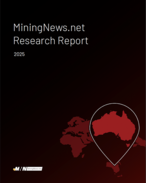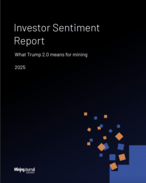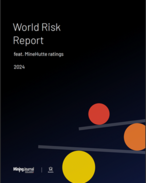This article is 20 years old. Images might not display.
777ŔĎ»˘»ú
In its latest research, the CME said in the current skills shortage environment FIFO is a more realistic alternative than ever before, with nearly half the resources sector employed on a roster basis. The CME is against any regulations being considered by the WA State Government that would restrict mining companies' ability to choose a FIFO workforce, including the introduction of "no fly zones"
"In order to attract skilled workers, companies must offer employment arrangements that fit in with their desire to maintain existing family living arrangements," CME chief executive Tim Shanahan conceded.
But the imposition of any FIFO regulations was a blunt instrument that would have detrimental effects, Shanahan added.
The CME research indicated the resources sector contributed $27 billion to WA's economy with $12.6 billion of that coming from operations that rely on FIFO arrangements.
In the current resources boom, and with its resultant labour shortage, there may be limited alternatives to FIFO arrangements, but the social impact of the system could not be ignored, said Kalgoorlie Boulder councillor Graham Thomson. He said it was time for companies to stop thinking of triple bottom lines and start thinking of the personal cost of FIFO arrangements.
"What the report addresses is well known, but what it doesn't address is more important. The experience from the mine chaplaincy is that nine out of ten calls from the mine sites is to deal with the breakdown of marriages because of FIFO and the roster system."
Kambalda nickel miner Mincor Resources' managing director David Moore disagrees on the extent of the social impact of FIFO. Mincor has been involved in research into the effects, and Moore said FIFO staff at Mincor sites were generally happy with the arrangements.
Shanahan also said the changing face of families, including dual income earners and blended families, meant FIFO allowed modern families to exist together more easily than if both partners were required to move to an isolated mine site.
Moore said when he was considering the workforce for the Redross and Mariners nickel mines his first choice was the cheaper alternative of a local workforce, but a booming resource industry had already reduced the supply of available skilled labour.
"Folk living in rural Australia who are opposed to FIFO shouldn't look at it as either we have a mine with people living in the town or a mine with people living FIFO. Really, the choice is we don't have a mine, or we have a mine with people living FIFO.
"FIFO is allowing operations to come into being that could not exist otherwise. It is not detracting anything from rural Australia - it is adding something to it."
He said any regulations brought in which would restrict companies selecting FIFO could have a disastrous impact on the industry and intensify the current lack of exploration in WA.
One point Thomson, Moore and Shanahan all agreed on was that the burden of reducing (even reversing) Australia's rural exodus fell squarely on the Government's plate.
Thomson, however, said governments needed to encourage mining companies to have a greater interest in rural communities, and flagged the possibility of financial incentives.
Moore said the Government already collected a great deal of revenue from mining companies by way of royalties and taxes.
"The Government should take some of the royalties generated from theses mining companies and put it into rural Australia," Moore said.
"There is already quite a big take from mining companies to the Government, and, above that, most mining companies put in additional funding into the rural community."
Shanahan said he hoped one outcome of the research would be greater understanding of the complex nature of the FIFO debate.













